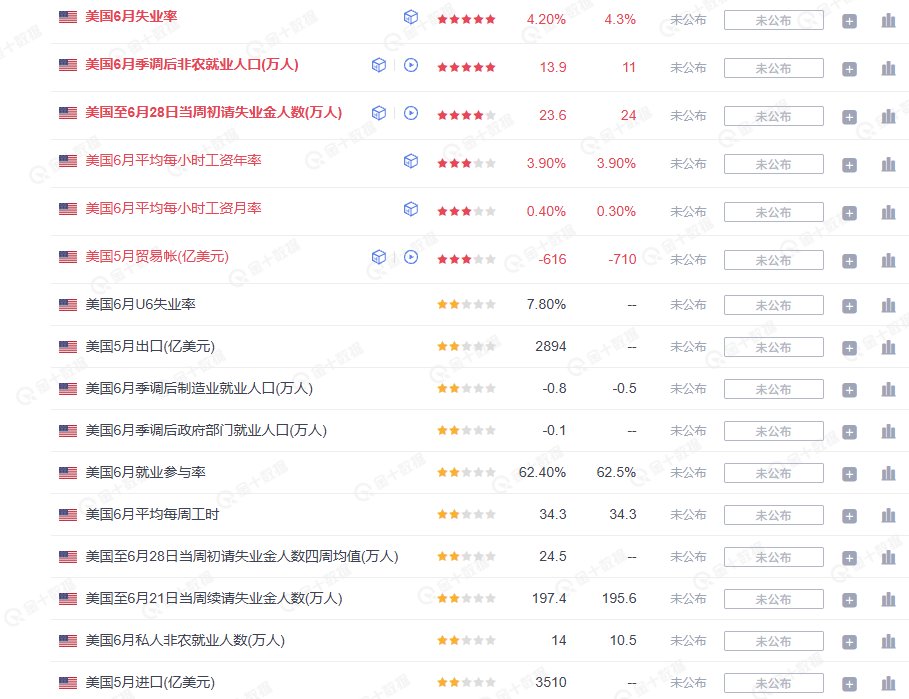Today there are two Spaces, so when the non-farm data is released, I may not be able to express my views immediately. Therefore, I want to discuss it beforehand. For me personally, the most critical data regarding non-farm data are:
Unemployment Rate > Employment Numbers > Wage Data
This is because both the Federal Reserve's meeting minutes and Powell's speeches consider the unemployment rate as an important factor in measuring the U.S. economy. In fact, Powell stated in the last interest rate meeting that if the unemployment rate does not rise, there will be no consideration for additional rate cuts.
Thus, the unemployment rate is very important for the Federal Reserve. Currently, the previous value is 4.2%, and the market expectation is 4.3%. Although it only increased by 0.1%, the market may take the path of "expected economic downturn, Fed defensive rate cuts." Of course, this is what the market believes, and it may not necessarily be what the Fed will execute.
This is similar to the ADP data of -3.3, which is like celebrating a funeral, treating bad data as good data (in the short term). So my personal judgment is:
4.2% (economic stability) <= Unemployment Rate <= 4.3% (economic downturn expectation) <= 4.5% (recession expectation rising)
In simple terms, if the unemployment rate is at 4.2% or lower, it indicates that the resilience of the U.S. economy is quite good. Although it reduces the possibility of continuous rate cuts by the Fed, at least the economy is stable. If it is greater than 4.2% but less than 4.5%, then the probability of a downturn in the U.S. economy is very high. The market will believe that the Fed still has defensive opportunities to use rate cuts to mitigate economic decline.
However, if it exceeds 4.5%, it goes beyond the Fed's expectations, as the Fed's neutral expectation for the unemployment rate is 4.5%. Although exceeding 4.5% would also increase the probability of the Fed cutting rates, it would simultaneously raise the market's expectation of a recession.
Next is employment numbers, which are definitely better when higher. The higher the number, the more stable the U.S. economy is, with more people employed, leading to social order stability. Wage data is also generally stable; rising wages, while indicating that inflation may be more stubborn, also show that the U.S. economic situation is still good, as companies are willing to pay higher wages due to better profits. Conversely, if wages decline, the economic outlook is poor.
Of course, these are just my personal judgments and may not be accurate.
This post is sponsored by @ApeXProtocolCN | Dex With ApeX

免责声明:本文章仅代表作者个人观点,不代表本平台的立场和观点。本文章仅供信息分享,不构成对任何人的任何投资建议。用户与作者之间的任何争议,与本平台无关。如网页中刊载的文章或图片涉及侵权,请提供相关的权利证明和身份证明发送邮件到support@aicoin.com,本平台相关工作人员将会进行核查。




